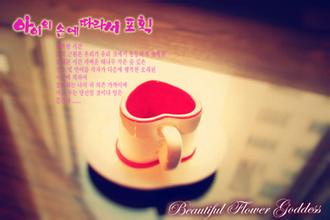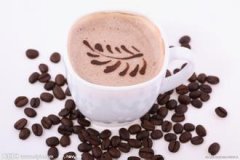A brief introduction to the flavor, taste and aroma characteristics of Starbucks coffee beans

If the coffee industry only stayed at this point in time, everyone was drinking instant coffee, and there was no development of specialty coffee, perhaps this is the best ending to the story. But the coffee is beginning to taste, Robusta's quality and flavor are very different from Arabica's, and robusta hybrids, promoted in emerging growing areas to combat rust, already account for a large portion of coffee production. And so, one thought came up with a way to equate Arabica with Arabica--and one example of this is around us, which is an example of this very absurd assumption. Traditionally, we would take Arabica cassava to Binchuan Zhugula as the starting point of Chinese coffee, but the real starting point of modern Chinese coffee industry is to grow catim for Nestle to earn foreign exchange. When the fine coffee industry started, we only had small and medium-sized hybrids, and there was no large-scale planting of small seeds. Therefore, we called Yunnan katim with Luo bean gene "Yunnan small coffee" without discrimination. Historical experience tells us that this method is effective and widely accepted by the market. Every year, during the coffee season, a large number of coffee industry people go to the mountains of Yunnan, and their eyebrows and beards catch Katim and bring him into the city for guests to seriously evaluate. Some of the so-called official coffee trading centers recommend all the fine beans, yes, all the pure katim and rate them, knowing that these activities are all practitioners with long experience in the fine coffee industry and coffee reviewers. Although they know what fine coffee is, it does not prevent them from staging the emperor's new clothes. Why is reality like this? There is only one answer, this, or just a business for everyone.
But the first coffee shop in Europe was not opened until 1683 in Vienna, Austria, by a Polish. Traders who knew the languages of Eastern Europe and Turkey, led by the brilliant Armenian merchant Johannes Diodato, not only acted as interpreters and guides for Austria during the war, but also engaged in a surprisingly profitable coffee trade on both sides of the line of fire, satisfying the needs of their own cafes and solving the urgent shortage of raw materials for coffee parties in many aristocratic and wealthy townspeople 'salons, and winning the favor of the upper classes. A few years later, the coffee industry that can be seen everywhere in the streets and alleys developed rapidly. Most of these cafes were opened by his fellow countrymen or Turks from other parts of the Ottoman Empire. Naturally, they had a strong Middle Eastern flavor. In the narrow shops where coffee was hot and fragrant wafted from many street corners, you could also see the usual benches against the wall and the coffee stoves with open firewood that were unique to Istanbul coffee shops. Most of the guests in them also came from vendors with nearby markets. A shepherd named Kaldi discovered coffee when he noticed that his sheep had become very lively after accidentally eating the fruit of a plant. All historians seem to agree that coffee was born in the Kaffa region of Ethiopia. However, the Arabs were the first to cultivate and consume coffee systematically, and the name coffee is believed to derive from the Arabic word Qahwah, meaning plant drink.
Coffee for drinking is said to have begun in the early eleventh century, and records of this can be found in ancient Arabic texts. Before that, the Arab region was to dry coffee beans and then boil them as stomach medicine to drink, but later learned that coffee also has a refreshing effect, coupled with the strict Islamic law, prohibiting believers from drinking alcohol, believers will use roasted coffee juice, as a substitute for alcohol to drink, it is said that the local people know how to roast beans to use, it is after the thirteenth century.
Starbucks Coffee Company announced its cooperation model in Kunming in February this year after signing a memorandum of cooperation with the government of Pu 'er City in Yunnan Province last year, saying it would formally sign a contract with Aini Group to set up a joint venture company in Yunnan to purchase and export coffee beans from Yunnan to supply its global stores, and would also operate coffee primary processing plants locally. It is reported that Starbucks and Aini's joint venture in Yunnan has a production capacity of about 27,000 tons and is expected to reach about 100,000 tons in the next five years. It is believed that the layout of the industry chain will provide Starbucks with a relatively stable procurement chain that can resist rising raw material costs, while reducing Starbucks 'dependence on Latin America, the largest coffee producer.
In response, Han Meirui told Netease Finance that coffee beans harvested in Yunnan will not only enter the Chinese coffee market, but also enter the global market. Starbucks 'commitment to growing coffee in Yunnan will be very long-term, she said.
But she also denied that Yunnan's cooperation was to combat rising prices for fresh ingredients, pointing out that Starbucks 'purchasing strategy is to buy 3% of the world's coffee beans, which represent different flavors of coffee from 20 different countries and four continents. "So Yunnan is an important pillar of our global sourcing strategy, which is not necessarily about reducing costs, but about producing the best coffee beans, so we can provide more flavors of coffee to customers all over the world. It is reported that there have been doubts. Globally, Starbucks is sometimes regarded as a mass consumer product, and the target group is mass consumers. But the Chinese consumers who can buy Starbucks products in China are likely to be those considered "upper middle class" or "elite."
For the huge differences between Chinese and foreign Starbucks consumers, Han Meirui said that each market is different. Overall coffee consumption in China is still fairly young, compared to places like the United States where most people drink coffee every day. For example, the typical Chinese consumer consumes an average of three cups of coffee a year, compared to about 250 cups elsewhere in the world. The coffee market in China takes a long time to catch up with other places. "As the market evolves and progresses, more and more people will incorporate coffee into their daily lives."
She also said Starbucks does not intentionally exclude any group from its target group. Just because coffee culture develops, it determines existing consumer groups, such as more business groups. "Because young people tend to try new things and create something of their own compared to other groups. So we're not deliberately excluding anyone, and our current consumer base will change a lot in five years. Looking forward, we can see that more and more Chinese consumers are incorporating coffee drinking habits into their daily lives."
Cooperation in Yunnan is not to resist rising coffee prices
In order to select the highest quality coffee beans in the world, we only purchase coffee cherries that are in full bloom, ripe and in good taste. And according to the size, color and fullness of the criteria over and over again screening. Some might call it obsessive-compulsive disorder, but we think that's the kind of coffee we're looking for--we'll drink over 1000 cups a day just to make sure it tastes good enough to please everyone. Each batch of coffee is tasted at least three times before approval, just to make you love the taste of each sip of Starbucks coffee. Coffee beans are ground to brew. There are many ways to brew coffee. Generally, special coffee machines are used. There are American coffee machines, siphons, mocha pots, espresso machines, etc., and the taste is different.
Single-item coffee is the best to drink with siphon style, and it is better if you have technology.
Italian coffee is more particular, but Italian coffee generally uses beans, and the one you buy is not suitable for use.
Or you can extract coffee at 88-92 degrees for one minute and filter it once, and it doesn't taste that good.
Important Notice :
前街咖啡 FrontStreet Coffee has moved to new addredd:
FrontStreet Coffee Address: 315,Donghua East Road,GuangZhou
Tel:020 38364473
- Prev

Brief introduction to the treatment method of Grinding scale and Baking degree of Fine Coffee beans in Honduras
Coffee in Honduras is dried in the sun, so there is always a hint of fruit in the taste. Honduran coffee has a rich and mellow taste, taste is not astringent, not sour, mellow and aroma are very high, quite personality. Honduran coffee can lead to multiple levels of flavor depending on the degree of roasting. Medium baking can exert the sweetness of beans.
- Next

Description of flavor, taste and aroma characteristics of Arabica boutique coffee beans
Arabica? Coffee has a varied and broad potential flavor. Arabica coffee produced in different regions, different elevations and different climates usually has its own characteristics and can show a completely different flavor. ? Arabica? When coffee is not roasted, it smells like grass. After proper roasting, it shows. Fruity? (medium and shallow baking) vs.
Related
- Detailed explanation of Jadeite planting Land in Panamanian Jadeite Manor introduction to the grading system of Jadeite competitive bidding, Red bid, Green bid and Rose Summer
- Story of Coffee planting in Brenka region of Costa Rica Stonehenge Manor anaerobic heavy honey treatment of flavor mouth
- What's on the barrel of Blue Mountain Coffee beans?
- Can American coffee also pull flowers? How to use hot American style to pull out a good-looking pattern?
- Can you make a cold extract with coffee beans? What is the right proportion for cold-extracted coffee formula?
- Indonesian PWN Gold Mandrine Coffee Origin Features Flavor How to Chong? Mandolin coffee is American.
- A brief introduction to the flavor characteristics of Brazilian yellow bourbon coffee beans
- What is the effect of different water quality on the flavor of cold-extracted coffee? What kind of water is best for brewing coffee?
- Why do you think of Rose Summer whenever you mention Panamanian coffee?
- Introduction to the characteristics of authentic blue mountain coffee bean producing areas? What is the CIB Coffee Authority in Jamaica?

